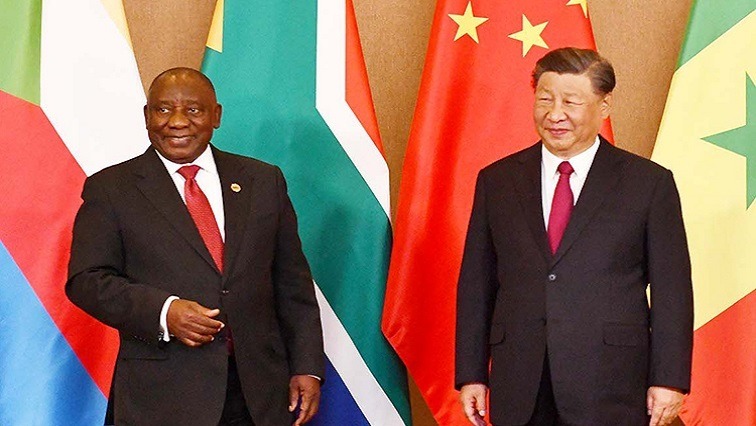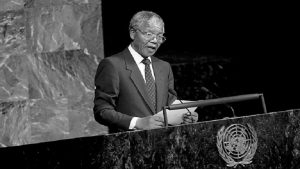Ministers Enoch Godingwana and Pravin Gordhan are among the list of high-level public figures attending a reception to mark the 25th anniversary of the establishment of diplomatic relations between South Africa and China.
China’s top envoy to South Africa, Ambassador Chen Xiaodong, is expected to deliver the keynote address.
Bilateral relations between Pretoria and Beijing were re-established by SA’s first democratic President, Nelson Mandela, shortly after the eradication of apartheid.
Since then, the ties have grown exponentially, benefiting both nations. Over the last 25 years, China has become one of SA’s biggest sources of foreign direct investment, with stock stock valued at $25 billion. Additionally, Chinese investment in SA is estimated to have created more than 400 000 direct and indirect jobs.
People-to-people diplomacy between the nations also appears strong. SA is host to the largest population of people of Chinese descent, with their numbers ranging between 250,000 and 350 000. In this way, it means SA hosts between 25% and 35% of the estimated one million Chinese in Africa.
China, the world’s second-largest economy after the US, uses a flagship programme called Belt & Road Forum for International Cooperation. It is Beijing’s strategy “that seeks to connect Asia with Africa and Europe via land and maritime networks”.
According to Amb Chen, “the aim is to improve regional integration, increasing trade and stimulating economic growth”. While the Belt & Road Cooperation is a global programme, China’s President Xi Jinping said China regards “South Africa as an important wheel in the cog for Africa as a whole”.
SA was the first African country to sign a Belt & Road Cooperation Memorandum of Understanding with China in 2015. It is credited with “causing robust growth that has greatly benefited both nations”.
Some of the benefits of the flourishing bilateral ties could be found in the field of energy. China has contributed some 244.5MW of wind power to SA’s misfiring electricity grid. They did this through Longyuan SA Renewable, a wholly-owned subsidiary of China’s State Power Investment Corporation’s Longyuan Power Group. Since 2011, the company has focussed its efforts inside SA on the development, construction and operation of renewable energy projects, particularly wind farms.
Some of China’s wind power projects are situated in the Northern Cape. They are known as De Aar1 AND De Aar11. They are credited with contributing to the development of infrastructure in the De Aar region, boosting the local economy, creating job opportunities for the locals and undertaking skills-transfer programmes as part of empowerment.
China and SA are also brought closer by their leadership role in BRICS-Plus, with Beijing having pushed hard for Pretoria’s acceptance into the then BRIC bloc.
Also in 2010, the bilateral ties between the two nations were elevated to a “Comprehensive Strategic Partnership”. This meant that the two nations were set to pursue cooperation in bilateral and multilateral matters.
In pursuit of common interests in international organisations such as the UN, WHO and WTO, to mention a few, China and SA are intrinsically on the same side of the geopolitical slate.
The close ties bode well for SA. China is one of the five permanent members of the UN Security Council, with a veto power. The joint pursuit of geopolitical goals in the international bodies is therefore a welcome strategic partnership for Pretoria.
Potentially, the two countries could build a community with a shared future that is premised on mutual endeavours.
For instance, trade between China and SA has ballooned from a mere $1.3 billion in the year 2000 to more than $56 billion in 2022. For the 13th year in a row, SA is China’s biggest trading partner in Africa.
There remain a number of steps that need to be undertaken in pursuit of a common destiny. The first, as Amb Chen spelt out when he addressed the annual Kgalema Motlanthe Foundation Dialogues in the Drakensberg in October: “Is to expand and upgrade bilateral trade, and we work to see that more SA minerals, agricultural and other high-quality products make their way into the Chinese market.”
He added: “The second is to boost bilateral investment cooperation. China is ready to work with SA to better connect infrastructure development strategies, encourage Chinese enterprises to invest more in SA and help improve SA’s infrastructure and also promote sustainable economic development.”
Ambassador Chen is correct. SA exports mainly low-value primary commodities to China such as fruits, wool, wood and copper, among others. The resetting of the trade regime between the two allies will ensure that trade relations between China and SA are no longer characterised by unequal exchanges. And that should be great for all parties.






